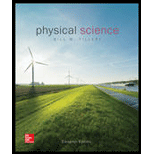
Physical Science
11th Edition
ISBN: 9780077862626
Author: Bill Tillery, Stephanie J. Slater, Timothy F. Slater
Publisher: McGraw-Hill Education
expand_more
expand_more
format_list_bulleted
Textbook Question
Chapter 2, Problem 35AC
You are at rest with a grocery cart at the supermarket when you see a checkout line open. You apply a certain force to the cart for a short time and acquire a certain speed. Neglecting friction, how long would you have to push with one-half the force to acquire the same final speed? _
a. One-fourth as long
b. One-half as long
c. Twice as long
d. Four times as long
Expert Solution & Answer
Want to see the full answer?
Check out a sample textbook solution
Chapter 2 Solutions
Physical Science
Ch. 2 - 1. A straight-line distance covered during a...Ch. 2 - 2. How fast an object is moving in a particular...Ch. 2 -
3. Acceleration occurs when an object undergoes...Ch. 2 - Prob. 4ACCh. 2 -
5. A car moving at 60 km/h comes to a stop in 10...Ch. 2 -
6. According to Galileo, an object moving without...Ch. 2 -
7. In free fall, an object is seen to have a (an)...Ch. 2 -
8. A tennis ball is hit, causing it to move...Ch. 2 -
9. A quantity of 5 m/s2 is a measure of...Ch. 2 - 10. An automobile has how many different devices...
Ch. 2 - 11. Ignoring air resistance, an object falling...Ch. 2 - 12. Ignoring air resistance, an object falling...Ch. 2 - 13. Two objects are released from the same height...Ch. 2 - 14. A ball rolling across the floor slows to a...Ch. 2 - 15. The basic difference between instantaneous and...Ch. 2 - 16. Does any change in the motion of an object...Ch. 2 - 17. A measure of how fast your speed is changing...Ch. 2 - 18. Considering the forces on the system of you...Ch. 2 - 19. Newton’s first law of motion describes
a. the...Ch. 2 - 20. You are standing freely on a motionless...Ch. 2 - 21. Mass is measured in kilograms, which is a...Ch. 2 - 22. Which metric unit is used to express a measure...Ch. 2 - 23. Newton’s third law of motion states that...Ch. 2 - 24. If you double the unbalanced force on an...Ch. 2 - 25. If you double the mass of a cart while it is...Ch. 2 - 26. Doubling the distance between the center of an...Ch. 2 - 27. If a ball swinging in a circle on a string is...Ch. 2 - 28. A ball is swinging in a circle on a string...Ch. 2 - 29. Suppose the mass of a moving scooter is...Ch. 2 - 30. Two identical moons are moving in identical...Ch. 2 - 31. Which undergoes a greater change of momentum,...Ch. 2 - Prob. 32ACCh. 2 - 33. An astronaut living on a space station that is...Ch. 2 - Prob. 34ACCh. 2 -
35. You are at rest with a grocery cart at the...Ch. 2 -
36. Once again you are at rest with a grocery...Ch. 2 -
37. You are moving a grocery cart at a constant...Ch. 2 -
38. You are outside a store, moving a loaded...Ch. 2 -
39. Neglecting air resistance, a ball in free...Ch. 2 -
40. From a bridge, a ball is thrown straight up...Ch. 2 -
41. After being released, a ball thrown straight...Ch. 2 -
42. A gun is aimed horizontally at the center of...Ch. 2 -
43. According to the third law of motion, which...Ch. 2 -
44. A small sports car and a large SUV collide...Ch. 2 -
45. Again consider the small sports car and large...Ch. 2 -
46. An orbiting satellite is moved from 10,000 to...Ch. 2 -
47. Newton’s law of gravitation considers the...Ch. 2 - 1. An insect inside a bus flies from the back...Ch. 2 - 2. Disregarding air friction, describe all the...Ch. 2 -
3. Can gravity act in a vacuum? Explain.
Ch. 2 -
4. Is it possible for a small car to have the...Ch. 2 -
5. Without friction, what net force is needed to...Ch. 2 -
6. How can there ever be an unbalanced force on...Ch. 2 -
7. Why should you bend your knees as you hit the...Ch. 2 -
8. Is it possible for your weight to change while...Ch. 2 - Prob. 9QFTCh. 2 - 10. Suppose you are standing on the ice of a...Ch. 2 - 11. A rocket blasts off from a platform on a space...Ch. 2 - 12. An astronaut leaves a spaceship that is moving...Ch. 2 - 1. What are the significant similarities and...Ch. 2 - 2. What are the significant similarities and...Ch. 2 -
3. Compare your beliefs and your own reasoning...Ch. 2 -
5. Why is it that your weight can change by...Ch. 2 -
6. Assess the reasoning that Newton's first law...Ch. 2 - 1. What was the average speed in km/h of a car...Ch. 2 - 2. What was the average speed in km/h of a boat...Ch. 2 -
3. How much would an 80.0 kg person weigh (a) on...Ch. 2 -
4. What force is needed to give a 6,000 kg truck...Ch. 2 -
5. What is the resulting acceleration when a 300...Ch. 2 -
6. A boat moves 15.0 km across a lake in 30.0...Ch. 2 -
7. If the Sun is a distance of 1.5 108 km from...Ch. 2 -
8. How many meters away is a cliff if an echo is...Ch. 2 -
9. A car has an average speed of 80.0 km/h for 1...Ch. 2 - 10. What is the acceleration of a car that moves...Ch. 2 - 11. How much time is needed for a car to...Ch. 2 - 12. A rocket moves through outer space at 11,000...Ch. 2 - 13. Sound travels at 348 m/s in the warm air...Ch. 2 - 14. How many hours are required for a radio signal...Ch. 2 - 15. A rifle is fired straight up, and the bullet...Ch. 2 - 16. A rock thrown straight up climbs for 2.50 s,...Ch. 2 - 17. An object is observed to fall from a bridge,...Ch. 2 - 18. A ball dropped from a window strikes the...Ch. 2 - 19. Find the resulting acceleration from a 300 N...Ch. 2 - 20. What is the momentum of a 30.0 kg shell fired...Ch. 2 - 21. What is the momentum of a 39.2 N bowling ball...Ch. 2 - 22. A 30.0 kg shell is fired from a 2,000 kg...Ch. 2 - 23. An 80.0 kg man is standing on a frictionless...Ch. 2 - 24. (a) What is the weight of a 5.00 kg backpack?...Ch. 2 - 25. What net force is required to accelerate a...Ch. 2 - 26. What forward force must the ground apply to...Ch. 2 - 27. A 1,000.0 kg car accelerates uniformly to...Ch. 2 - 28. A net force of 3,000.0 N accelerates a car...Ch. 2 - 29. How much does a 60.0 kg person weigh?
Ch. 2 - 30. What tension must a 50.0 cm length of string...Ch. 2 - 31. A 200.0 kg astronaut and equipment move with a...
Knowledge Booster
Learn more about
Need a deep-dive on the concept behind this application? Look no further. Learn more about this topic, physics and related others by exploring similar questions and additional content below.Similar questions
- . As a baseball is being caught, its speed goes from 30 to 0 m/s in about 0.005 s. Its mass is 0.145 kg. (a) What is the baseball’s acceleration in m/s and in Ws? (b) What is the size of the force acting on it?arrow_forwardA Suppose you place a block of mass M on a plane inclined at an angle . Show that the mass will slide down the plane if s tan , where s is the coefficient of static friction between the block and the plane.arrow_forwardA weight lifter stands on a bathroom scale. He pumps a barbell up and down. What happens to the reading on the scale as he does so? What If? What if he is strong enough to actually throw the barbell upward? How does the reading on the scale vary now?arrow_forward
- A 1100-kg car pulls a boat on a trailer. (a) What total force resists the motion of the car, boat, and trailer, if the car exerts a 1900-N force on the road and produces an acceleration of 0.550 m/s2? The mass of the boat plus trailer is 700 kg. (b) What is the force in the hitch between the car and the trailer if 80% of the resisting forces are experienced by the boat and trailer?arrow_forwardA 5.00105 -kg rocket is accelerating straight up. Its engines produce 1.250107 N of thrust, and air resistance is 4.50106 N. What is the rocket's acceleration? Explicitly show how you follow the steps in the Problem-Solving Strategy for Newton's laws of motion.arrow_forwardA block of mass 3m is placed on a frictionless horizontal surface, and a second block of mass m is placed on top of the first block. The surfaces of the blocks are rough. A constant force of magnitude F is applied to the first block as in Figure P4.68. (a) Construct free-body diagrams for each block. (b) Identify the horizontal force that causes the block of mass m to accelerate. (c) Assume that the upper block does not slip on the lower block, and find the acceleration of each block in terms of m and F. Figure P4.68arrow_forward
- A 7.0-N force parallel to an incline is applied to a 1.0-kg crate. The ramp is tilted at 20 and is frictionless. (a) What Is the acceleration of the crate? (b) If all other conditions are the same but the ramp has a friction force of 1.9 N, what is the acceleration?arrow_forward(a) Give an example of different net external forces acting on the same system to produce different accelerations. (b) Give an example of the same net external force acting on systems of different masses, producing different accelerations. (c) What law accurately describes both effects? State it in words and as an equation.arrow_forwardIntegrated Concepts When starting a foot race, a 70.0-kg sprinter exerts an average force of 650 N backward on the ground for 0.800 s. (a) What is his final speed? (b) How far does he travel?arrow_forward
- A student’s backpack, full of textbooks, is hung from a spring scale attached to the ceiling of an elevator. When the elevator is accelerating downward at 3.8m/s2 , the scale reads 60 N. (a) What Is the mass of the backpack? (b) What does the scale read if the elevator moves upward while speeding up at a rate 3.8m/s2 ? (c) What does the scale read if the elevator moves upward at constant velocity? (d) If the elevator had no brakes and the cable supporting it were to break loose so that the elevator could fall freely, what would the spring scale read?arrow_forwardA car with a mass of 1000.0 kg accelerates from 0 to 90.0 km/h in 10.0 s. (a) What is its acceleration? (b) What is the net force on the car?arrow_forwardA soft tennis ball is dropped onto a hard floor from a height of 1.50 m and rebounds to a height of 1.10 m. (a) Calculate its velocity just before it strikes the floor. (b) Calculate its velocity just after it leaves the floor on its way back up. (c) Calculate its acceleration during contact with the floor if that contact lasts (3.50103s). (d) How much did the ball compress during its collision with the floor, assuming the floor is absolutely rigid?arrow_forward
arrow_back_ios
SEE MORE QUESTIONS
arrow_forward_ios
Recommended textbooks for you
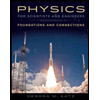 Physics for Scientists and Engineers: Foundations...PhysicsISBN:9781133939146Author:Katz, Debora M.Publisher:Cengage Learning
Physics for Scientists and Engineers: Foundations...PhysicsISBN:9781133939146Author:Katz, Debora M.Publisher:Cengage Learning University Physics Volume 1PhysicsISBN:9781938168277Author:William Moebs, Samuel J. Ling, Jeff SannyPublisher:OpenStax - Rice University
University Physics Volume 1PhysicsISBN:9781938168277Author:William Moebs, Samuel J. Ling, Jeff SannyPublisher:OpenStax - Rice University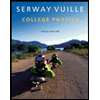 College PhysicsPhysicsISBN:9781285737027Author:Raymond A. Serway, Chris VuillePublisher:Cengage Learning
College PhysicsPhysicsISBN:9781285737027Author:Raymond A. Serway, Chris VuillePublisher:Cengage Learning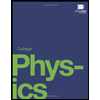 College PhysicsPhysicsISBN:9781938168000Author:Paul Peter Urone, Roger HinrichsPublisher:OpenStax College
College PhysicsPhysicsISBN:9781938168000Author:Paul Peter Urone, Roger HinrichsPublisher:OpenStax College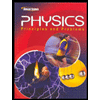 Glencoe Physics: Principles and Problems, Student...PhysicsISBN:9780078807213Author:Paul W. ZitzewitzPublisher:Glencoe/McGraw-Hill
Glencoe Physics: Principles and Problems, Student...PhysicsISBN:9780078807213Author:Paul W. ZitzewitzPublisher:Glencoe/McGraw-Hill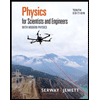 Physics for Scientists and Engineers with Modern ...PhysicsISBN:9781337553292Author:Raymond A. Serway, John W. JewettPublisher:Cengage Learning
Physics for Scientists and Engineers with Modern ...PhysicsISBN:9781337553292Author:Raymond A. Serway, John W. JewettPublisher:Cengage Learning

Physics for Scientists and Engineers: Foundations...
Physics
ISBN:9781133939146
Author:Katz, Debora M.
Publisher:Cengage Learning

University Physics Volume 1
Physics
ISBN:9781938168277
Author:William Moebs, Samuel J. Ling, Jeff Sanny
Publisher:OpenStax - Rice University

College Physics
Physics
ISBN:9781285737027
Author:Raymond A. Serway, Chris Vuille
Publisher:Cengage Learning

College Physics
Physics
ISBN:9781938168000
Author:Paul Peter Urone, Roger Hinrichs
Publisher:OpenStax College

Glencoe Physics: Principles and Problems, Student...
Physics
ISBN:9780078807213
Author:Paul W. Zitzewitz
Publisher:Glencoe/McGraw-Hill

Physics for Scientists and Engineers with Modern ...
Physics
ISBN:9781337553292
Author:Raymond A. Serway, John W. Jewett
Publisher:Cengage Learning
Drawing Free-Body Diagrams With Examples; Author: The Physics Classroom;https://www.youtube.com/watch?v=3rZR7FSSidc;License: Standard Youtube License